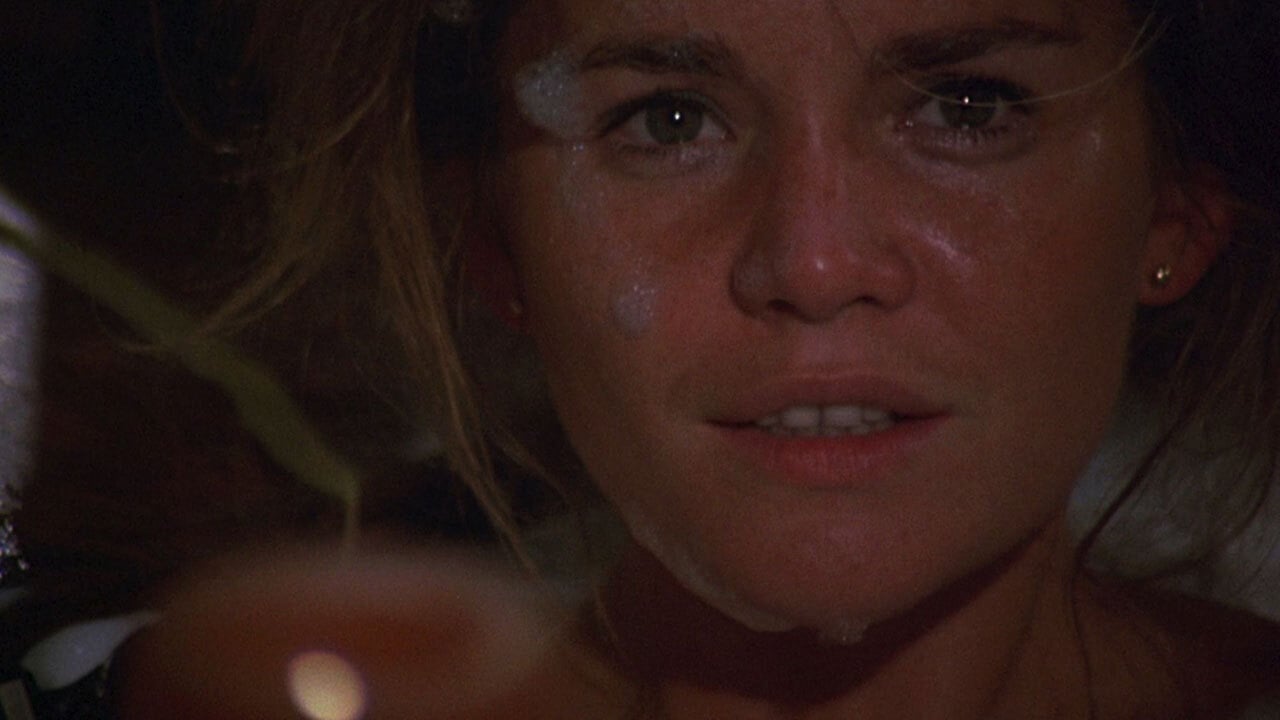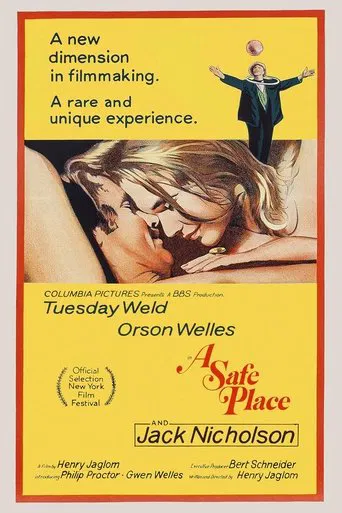

One might be tempted to call Henry Jaglom's directing debut "A Safe Place", which he also wrote (based on material he originally presented on stage in New York), self-indulgent; however, the indulgence here really belongs to the editor, Pieter Bergema. This is a movie 'made' in its editing stages, and either Bergema had too much film to work with or not enough (this might explain the endless close-ups of crying or howling faces, several of them repeated). Tuesday Weld plays a commune-living hippie chick in New York City, on a tightrope between being a woman and wanting to remain a child, who begins a relationship with a drop-out from high society before she has resolved her feelings for former boyfriend Jack Nicholson, who apparently left her for another woman. Jaglom encourages his cast to wing it, and so we're left with lots of rambling, pseudo-introspective monologues about illusion and reality. It's wise not to try and dissect "A Safe Place"--that would be like analyzing a snowflake. There's just not enough real substance here--nor enough real acting--to spark a debate on the film. Orson Welles as a magician (or perhaps Weld's guardian angel) looks like a cross between Jackie Gleason and Oliver Hardy; he has fun doing magic tricks in Central Park, but is mostly used as a shoulder for Weld to lean on. Weld herself is a lovely presence (although this little-girl-lost number was just about played out), and cinematographer Dick Kratina gets some gorgeous shots of her all around the city, but the only genuine acting in the film comes from newcomer Gwen Welles as another hippie who is mesmerized by the non-meaning of her dreams. ** from ****
... View MoreI didn't think BBS could have a stinker in the bunch. But this is the one bad apple for sure. It's so dislocated and uneventful, it truly hurts to see such great talents go to waste. Whatever it thought it was, it wasn't. Whatever it was trying to be, it couldn't. Whatever fulfilling moral it thought it possessed, it doesn't. It's useless magic that baffles the viewer into innocently believing for a mere moment, and then is ashamed for having bought into it. That sentiment can be said of so many flaky relationships with supposed 'magical beauty' that 90% of the viewers have already experienced, or will experience. This movie does absolutely nothing to justify or caution the naive lustful immaturity of the whole ordeal. If anything, it exploits Noah for being an overly attractive airhead that men put up with in order for sex. And as long as they do, she will eventually put out for them. I found this more distasteful of any Russ Myers or Roger Corman-esque 'Grindhouse Sexploitation' movie I've ever come across. And believe me, I like those movies A LOT! Like the fishing lines used in Welles childish tricks through out the film, and carrying the camera off on a balloon to simulate 'flight' - DO NOT BUY INTO THIS FOR ONE MOMENT! You'll be such an easy lay if you do.
... View MoreA strange young woman (Tuesday Weld) lives in a fantasy world where she can never grow up.Henry Jaglom's directorial debut was a "critical and box-office disaster". Time magazine called the film "pretentious and confusing", a film that "suggests that the rumors of his expertise were greatly exaggerated, or at least that it does not extend to directing." Apparently, for the critics, not even the presence of the incredible Orson Welles or Jack Nicholson could save this one.Author Anais Nin was perhaps the most kind. She called the film "an impressionistic film, an X ray of our psychic life, which gives an insight instantly into the secret self." She called it a "masterpiece", and praised it for its dreamlike quality that could only be captured on film.
... View MoreWonderfully bizarre and experimental piece of work for which Jaglom should be very proud. Welles and Nicholson are great in this head game. Let yourself go when you watch this--experience it--this is not a "movie"--this is a trip!! You will get as much out of this as you allow yourself to take.
... View More